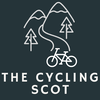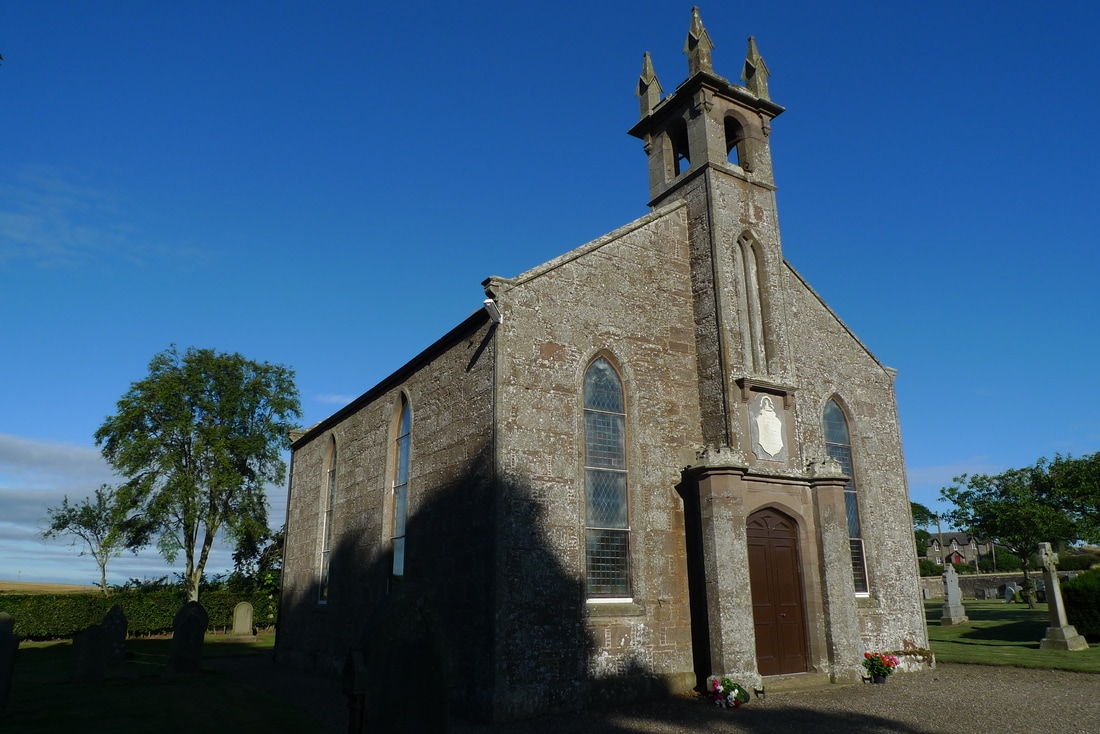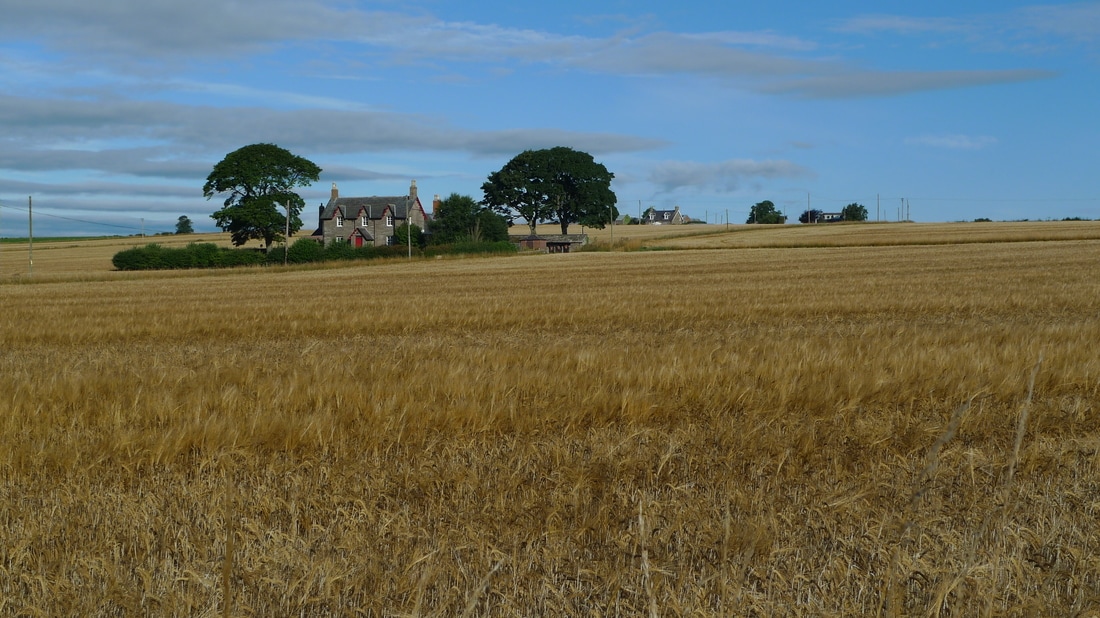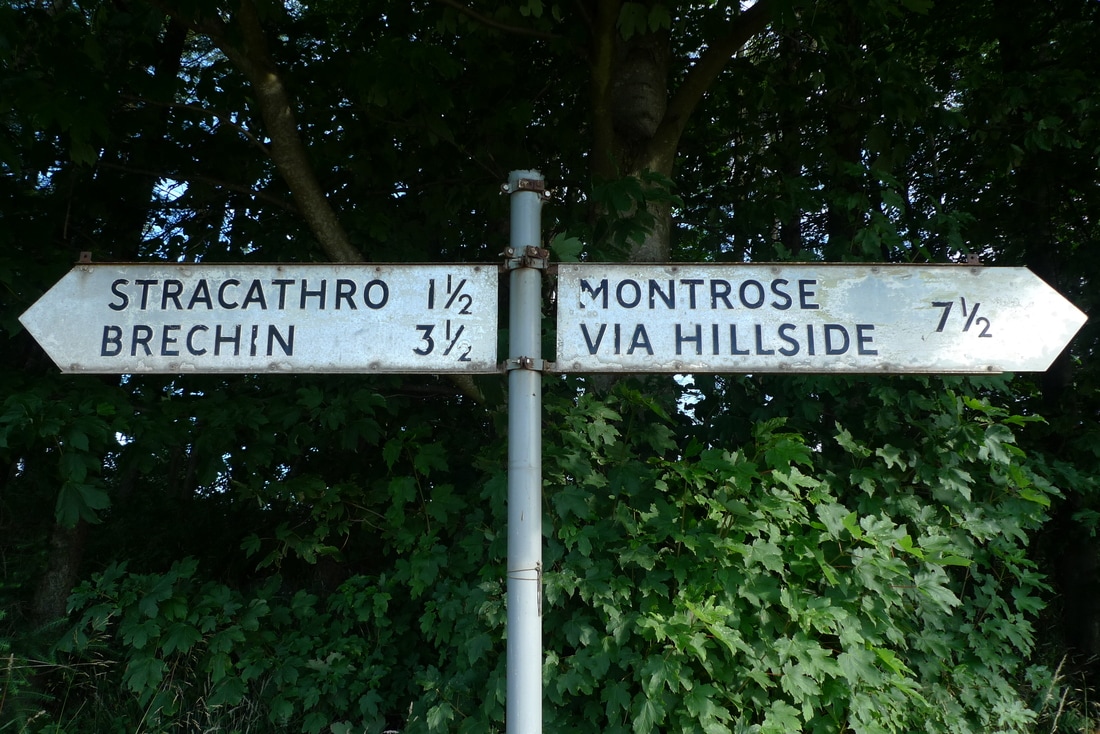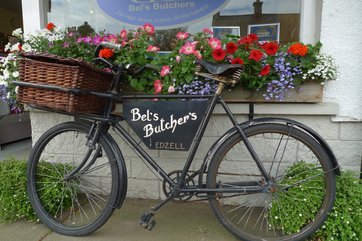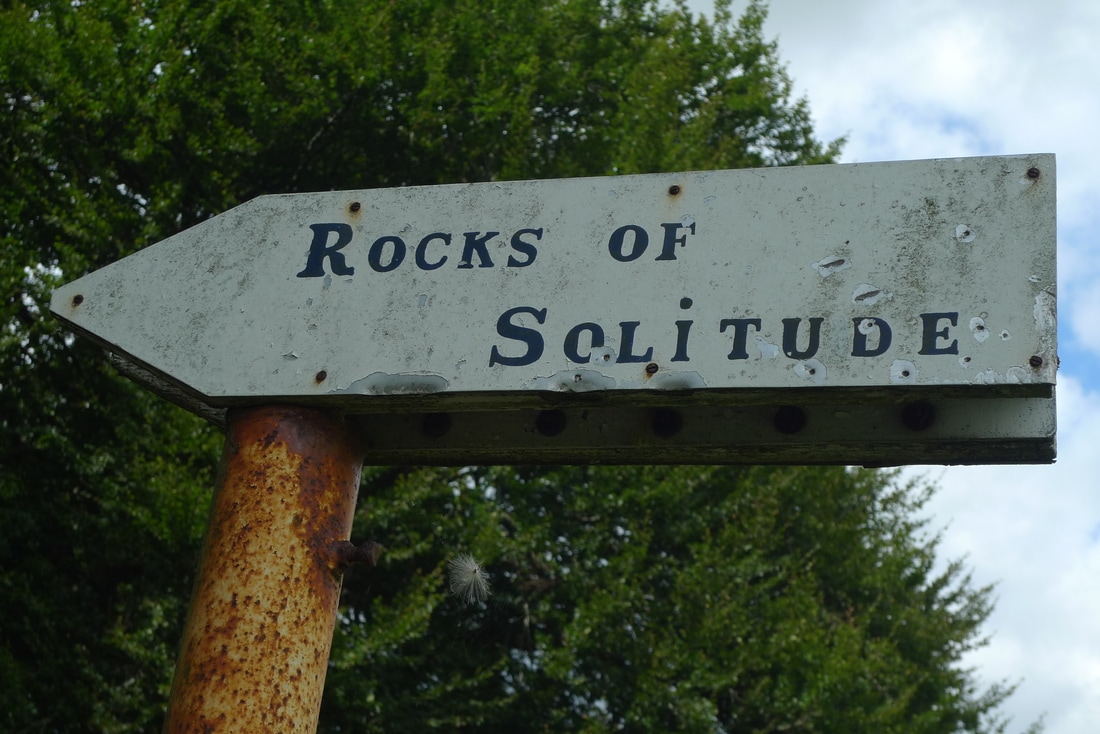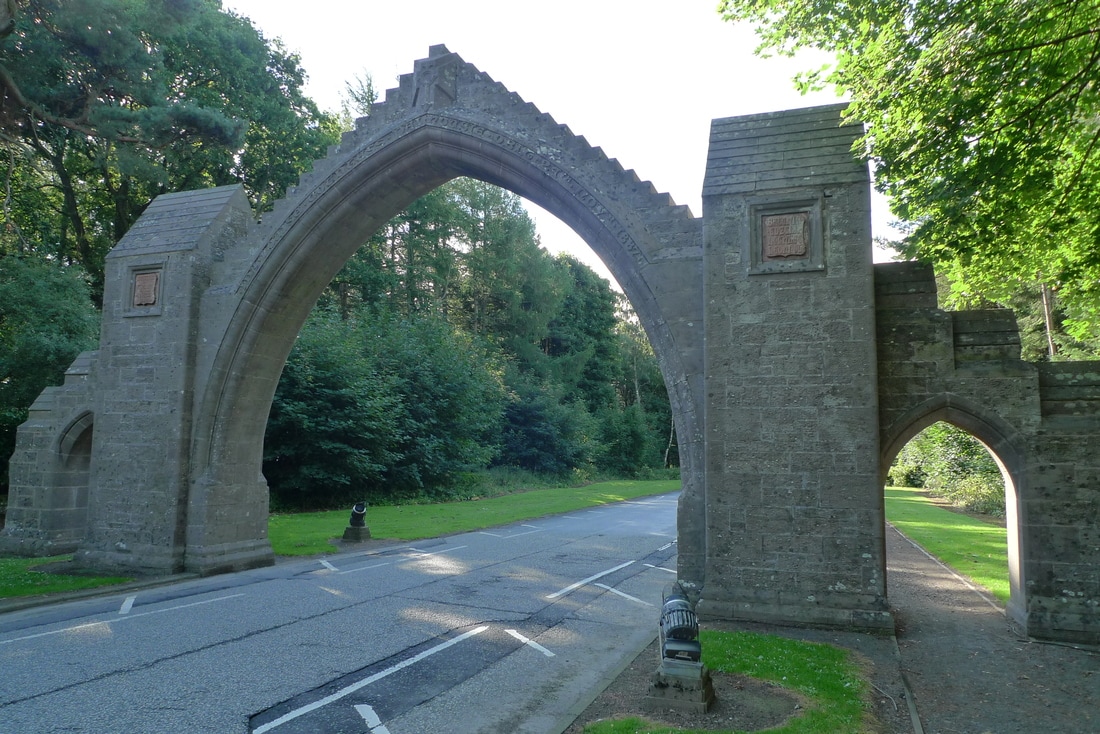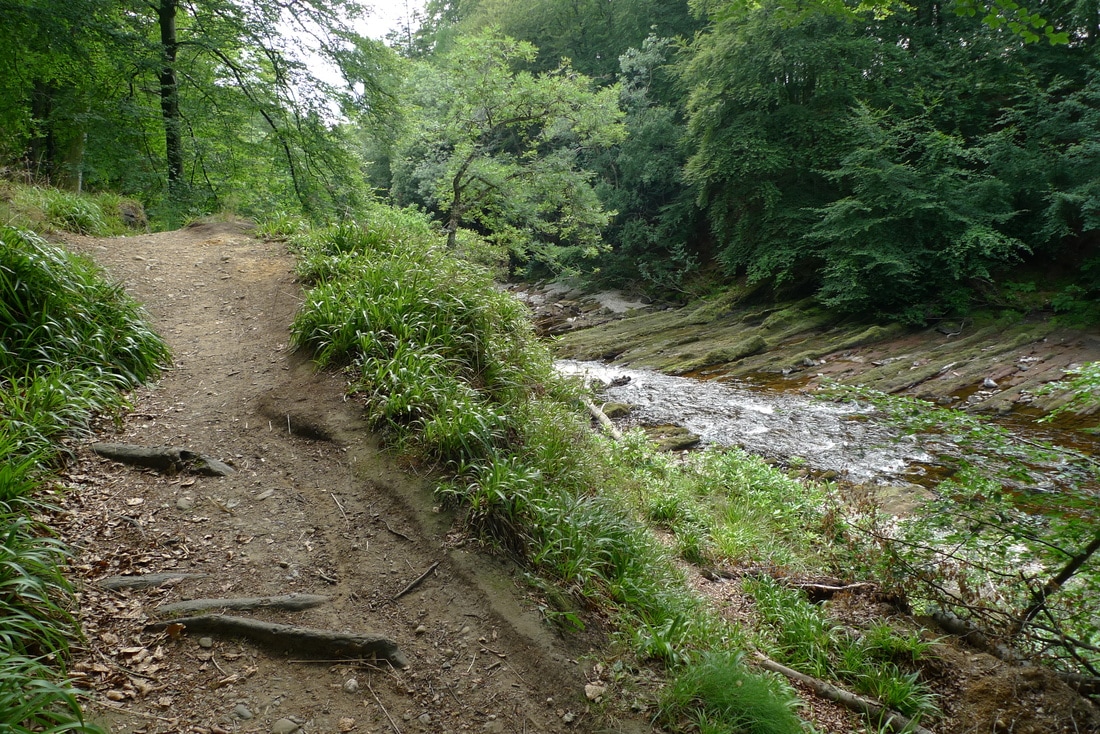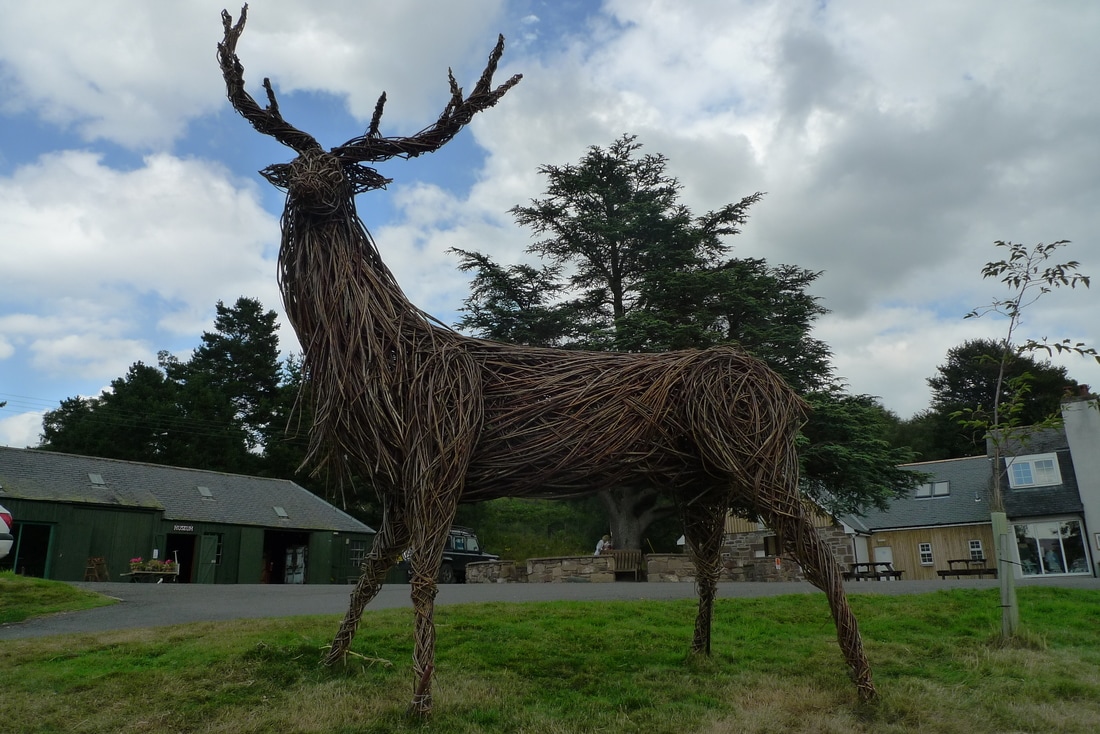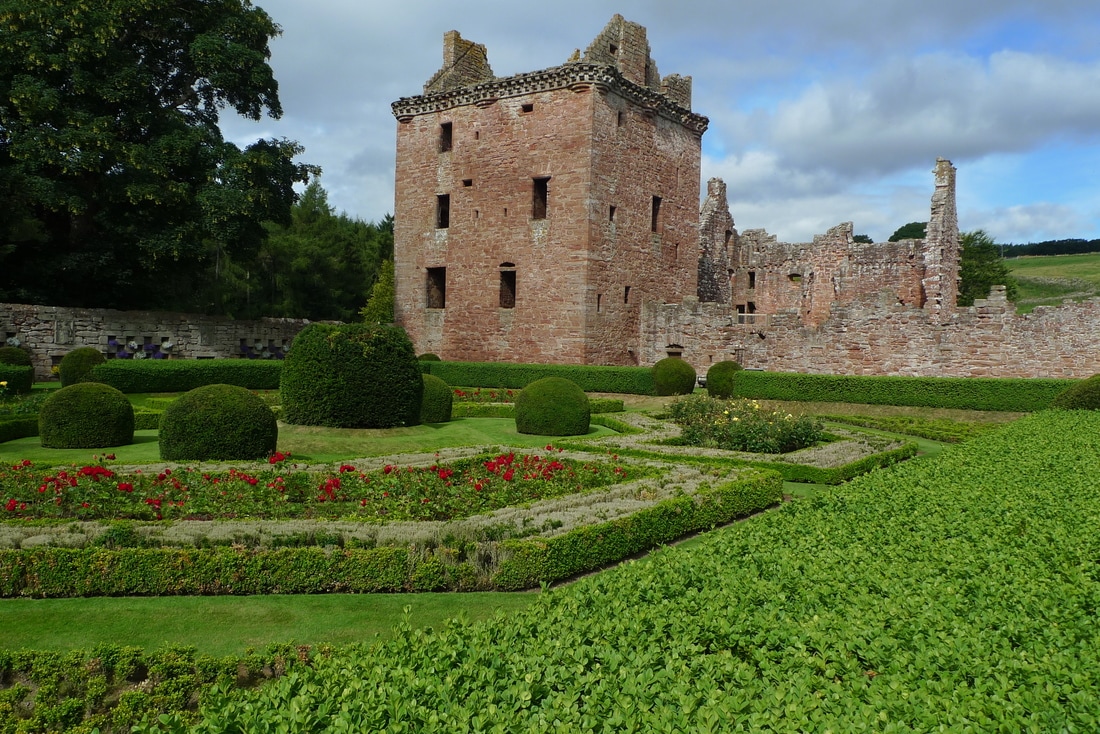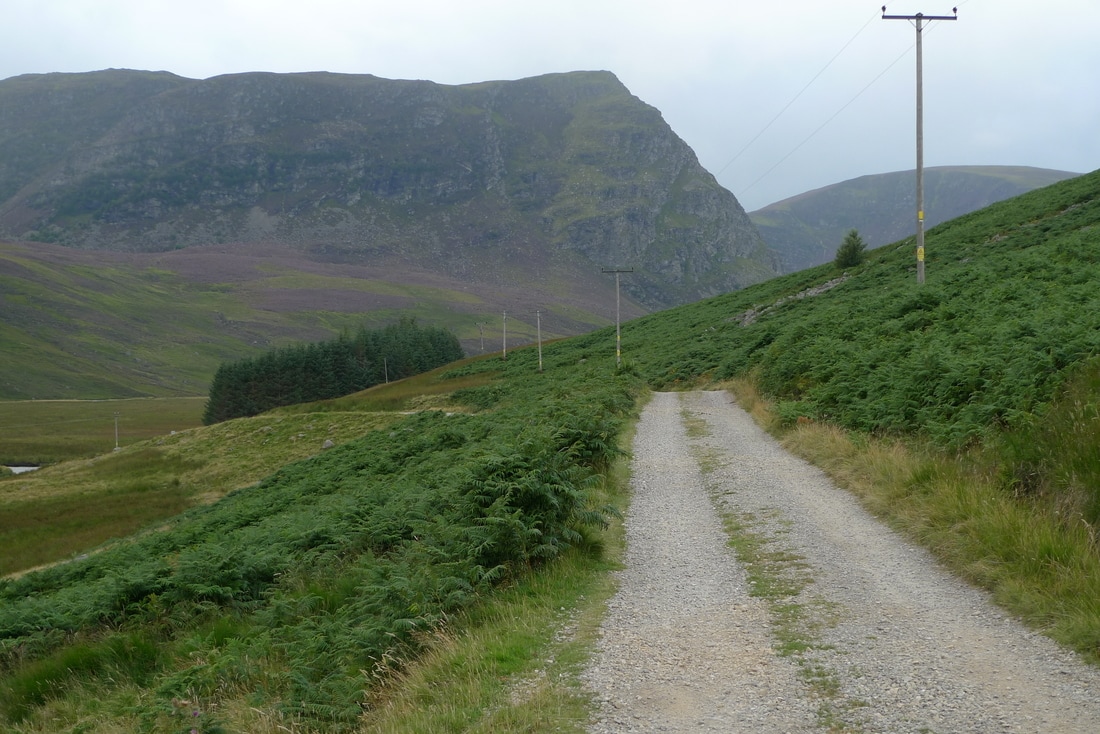I was a guest in the manse house at the end of the glen. Candles flickered, the rooms were scented of smoke from the fireplaces and dark wood floors creaked underfoot. The dinner table was set with crystals glasses and white napkins. I was served duck legs in a sweet red wine sauce with braised cabbage. I was joined by a couple from Venice and we were entertained by our host, Ian, with tales of his colourful life. I felt like I was on the set of some period drama rather than at the end point of a cycling journey.
The House of Mark is certainly a unique guest house. The interior has been kept true to its Georgian roots with fittings and furnishings that transported me to a different era. It is located within the wildlife-rich landscape of Glen Esk, at the foot of the Cairngorms National Park. It is the only accommodation in the glen and sits at the very end of a 16 mile single-track road from the town of Edzell. This road is cycling perfection, by the way.
I began my journey at Montrose station where the train arrives via a curved viaduct and deposits you onto a platform that overlooks a huge expanse of water, the Montrose Basin. I could see and hear all sorts of avian activity including paddling eider ducks and a myriad of bird calls. This has to be one of the best vistas from a train station platform in the whole country. It must be particularly spectacular to arrive by train in the winter months when 80,000 pink-footed geese feed in the basin.
I took the Montrose Basin Cycle Route, which is mainly on shared pavement, alongside the A935. I soon had a fine view of the perfect proportions of the House of Dun across a field. It is one of Scotland's finest stately homes, designed by the renowned architect, William Adam. A right turn after the house took me onto a minor road and into a world of rural tranquillity.
In the grounds of Dun and Hillside church a woodpecker tapping in a tree was the most prominent sound. All around me were pale yellow wheat fields dotted with the occasional sturdy stone farm house. It was the kind of place where I could quite happily lie down in a field with a book for many hours.
As I progressed along the road there was a definite feeling of heading into the mountains. It begins with flat farmland then hills gradually appear on the horizon. The hills got larger and larger the further I went. This builds a sense of adventure, that you are heading into the great outback.
The drawback of this route is that it is sliced by the A90. I could hear the road before I could see it. A menacing monster of 4 lanes of thundering trucks and hasty hatchbacks. I was nervous about this, but the road is blessed with an island halfway across so that I was able to push the bike over two lanes and then wait for the traffic to clear before I crossed the final two lanes.
Making my entrance
A flat and wide B-road, through a forest, took me towards Edzell. The entry into the village is one of the grandest in Scotland as you must pass under a regal archway that straddles the road. It commemorates the 13th Earl of Dalhousie and gives the town a distinctive symbol. I noticed that the arch features on the sign for Edzell's golf club. Edzell takes its flowers very seriously as there is a profusion of planters filled with colourful blooms. Outside the butcher shop there is even a bicycle forming part of a flower display.
The House of Mark is certainly a unique guest house. The interior has been kept true to its Georgian roots with fittings and furnishings that transported me to a different era. It is located within the wildlife-rich landscape of Glen Esk, at the foot of the Cairngorms National Park. It is the only accommodation in the glen and sits at the very end of a 16 mile single-track road from the town of Edzell. This road is cycling perfection, by the way.
I began my journey at Montrose station where the train arrives via a curved viaduct and deposits you onto a platform that overlooks a huge expanse of water, the Montrose Basin. I could see and hear all sorts of avian activity including paddling eider ducks and a myriad of bird calls. This has to be one of the best vistas from a train station platform in the whole country. It must be particularly spectacular to arrive by train in the winter months when 80,000 pink-footed geese feed in the basin.
I took the Montrose Basin Cycle Route, which is mainly on shared pavement, alongside the A935. I soon had a fine view of the perfect proportions of the House of Dun across a field. It is one of Scotland's finest stately homes, designed by the renowned architect, William Adam. A right turn after the house took me onto a minor road and into a world of rural tranquillity.
In the grounds of Dun and Hillside church a woodpecker tapping in a tree was the most prominent sound. All around me were pale yellow wheat fields dotted with the occasional sturdy stone farm house. It was the kind of place where I could quite happily lie down in a field with a book for many hours.
As I progressed along the road there was a definite feeling of heading into the mountains. It begins with flat farmland then hills gradually appear on the horizon. The hills got larger and larger the further I went. This builds a sense of adventure, that you are heading into the great outback.
The drawback of this route is that it is sliced by the A90. I could hear the road before I could see it. A menacing monster of 4 lanes of thundering trucks and hasty hatchbacks. I was nervous about this, but the road is blessed with an island halfway across so that I was able to push the bike over two lanes and then wait for the traffic to clear before I crossed the final two lanes.
Making my entrance
A flat and wide B-road, through a forest, took me towards Edzell. The entry into the village is one of the grandest in Scotland as you must pass under a regal archway that straddles the road. It commemorates the 13th Earl of Dalhousie and gives the town a distinctive symbol. I noticed that the arch features on the sign for Edzell's golf club. Edzell takes its flowers very seriously as there is a profusion of planters filled with colourful blooms. Outside the butcher shop there is even a bicycle forming part of a flower display.
I had a coffee and Turkish mallow slice in the Tweedie Coffee House, a wonderful old fashioned café packed with locals. The room is decorated with black and white photographs depicting agricultural life- horse ploughing, Highland cows and lambing. There is taxidermy hung from the walls, heads of deer, goats and rams. A community noticeboard advertised the Tarfside Woman's Rural Institute cheese, wine and dance.
The customers seated behind me ordered a ‘Tweedie McMuffin’, an Edzell take on the classic fast food breakfast. Two older men wearing matching cardigans were sat at the table opposite me. They tucked in to bowls of carrot, red pepper and coconut milk soup and didn’t say a word to each other apart from “soup’s good.”
The woman at the counter chatted to all the regulars. “Did you hear that Angus has got 4 puppies, 3 bitches and one dog?”... “What’s going on George? You’re not normally here on a Wednesday. You said ‘see you Monday’, why are you here? You said ‘Monday’”... “My son gets his teeth out next week, then he’s off to New Zealand.”
The Rocks of Solitude
Edzell has a castle located in the surrounding farmland. I dodged the resident peacocks and climbed the ruined tower house for an unforgettable vision of immaculate decorative hedges and flowers. This walled garden, dating from 1604, is the star feature of the castle. The walls have built-in flower boxes and stone carvings that depict the 7 virtues and the 7 sins. In one corner there is a summer house where the Lindsay family would spend sunny evenings. I loved this little building with its spiral staircase leading to the upstairs room.
The problem, if you can call it that, about cycling in Glen Esk is that there are far too many exciting walking trails that make you want to stop pumping the pedals and get hiking instead. The Tolkien-like names of these walks- the Rocks of Solitude and the Blue Door- make them impossible to ignore.
There really is a blue door that you open up and on the other side there is a special world of forest paths, rock pools and a fast flowing stream. I found a real life secret garden! There was something about this place that sparked my sense of child-like adventure and I felt myself almost skipping along the path. I was struck by how clear the water is, providing a flawless view to the river's floor of pebbles.
I met two local women on the path to the Rocks of Solitude and asked them where this name came from. "Well, we asked an elderly gentlemen and he said there is a cutting in the rocks and if you stand there it is the only place you can't hear the water." A few minutes more walking and I found this place. It was indeed quieter, although not completely silent of the water sound, but I loved the whole idea of someone experiencing this peace within the rocks and coming up with this name for the walk.
"The water is usually much higher," one of the women told me. "It's normally faster flowing and looks amazing. Fishing is not great because the water is lower." She asked about my cycling journey and said, "it's good to go somewhere you haven't been. Refreshes you." I couldn't agree more.
Back in the saddle I progressed deeper into the glen and was treated to several wildlife encounters. First, a Golden Eagle launched itself from a tree. Then a stoat crossed from one side of the road to the other, his little legs going a hundred miles an hour. There were rabbits everywhere and baby pheasants hanging around in small groups.
"Oh the parlour. We were never allowed into it. No, children were not allowed. The room was hardly ever used. Not until telly came that is. When telly came that was the place to put it." Oral history from Glenesk Folk Museum
Glenesk Folk Museum, about 9 miles from Edzell, has a giant willow sculpture of a stag on the lawn. The museum tells the fascinating story of the people who lived in the glen through a collection of artefacts, costumes and reconstructions of what houses were like in the 1850s. One object that caught my eye was the heart shaped spurtle. These were made by men as tokens of love for their women. The spurtle was a kitchen utensil used for turning scones and oatcakes on an open fire. I also found a chair with uneven legs, deliberately cut this way because the floors of the houses were made of uneven beaten earth.
People lived a simple life and it was normal for children to walk barefoot to school or church, carrying their boots over their shoulders in order not to wear them out. The saddest story of the glen is that hundreds of people were forced to give up this beautiful pace in the late nineteenth century to search for work in the Americas or Australasia. Like many parts of rural Scotland the growth of sheep farming and deer forests resulted in a loss of land and homes.
The views from the remaining 5 miles of my journey really opened up, revealing the Cairngorm Mountains on the horizon and vertiginous hillsides covered in purple heather. Some steep sections had me standing to get more power onto my pedal strokes and taking gulps of oxygen that was rich with the sweet smell of wildflowers.
I had arrived about one hour before dinner was due to be served in the manse, so I decided to see if I could go further into the glen on my bike. I discovered a rough gravel track that heads along the shores of Loch Lee. On the way I passed the ruins of Invermark Castle, an impressive survivor from the 1300s. There is no access to the inside, but for a typical Scottish castle scene it is near perfect.
The road along the loch was great fun to bounce along, but the best part was the peace. In the same way that your senses can be overcome by noise in an bustling city my senses were overwhelmed by the quiet and isolation. It was something to do with this being a hidden place because there was no through road and you have to make a bit of an effort to travel here. The loch is also enclosed by hills which makes it feel like a protected and nurtured place. No shops, no pubs, no vehicles. Just me. I had this all to myself and I would be spending the night here.
That mix of back to basics with a touch of luxury is what I loved about House of Mark. The food was delicious, the hosts charming and the historical atmosphere of the house delightful. The absence of televisions and the emphasis on the fireplace and conversation resulted in a greater appreciation for the land that I was in and perhaps some small connection to the people I read about at the museum who had to give it all up for a new life abroad.
Read Part two of this travel feature: Breakfast with Squirrels
Glenesk Folk Museum, about 9 miles from Edzell, has a giant willow sculpture of a stag on the lawn. The museum tells the fascinating story of the people who lived in the glen through a collection of artefacts, costumes and reconstructions of what houses were like in the 1850s. One object that caught my eye was the heart shaped spurtle. These were made by men as tokens of love for their women. The spurtle was a kitchen utensil used for turning scones and oatcakes on an open fire. I also found a chair with uneven legs, deliberately cut this way because the floors of the houses were made of uneven beaten earth.
People lived a simple life and it was normal for children to walk barefoot to school or church, carrying their boots over their shoulders in order not to wear them out. The saddest story of the glen is that hundreds of people were forced to give up this beautiful pace in the late nineteenth century to search for work in the Americas or Australasia. Like many parts of rural Scotland the growth of sheep farming and deer forests resulted in a loss of land and homes.
The views from the remaining 5 miles of my journey really opened up, revealing the Cairngorm Mountains on the horizon and vertiginous hillsides covered in purple heather. Some steep sections had me standing to get more power onto my pedal strokes and taking gulps of oxygen that was rich with the sweet smell of wildflowers.
I had arrived about one hour before dinner was due to be served in the manse, so I decided to see if I could go further into the glen on my bike. I discovered a rough gravel track that heads along the shores of Loch Lee. On the way I passed the ruins of Invermark Castle, an impressive survivor from the 1300s. There is no access to the inside, but for a typical Scottish castle scene it is near perfect.
The road along the loch was great fun to bounce along, but the best part was the peace. In the same way that your senses can be overcome by noise in an bustling city my senses were overwhelmed by the quiet and isolation. It was something to do with this being a hidden place because there was no through road and you have to make a bit of an effort to travel here. The loch is also enclosed by hills which makes it feel like a protected and nurtured place. No shops, no pubs, no vehicles. Just me. I had this all to myself and I would be spending the night here.
That mix of back to basics with a touch of luxury is what I loved about House of Mark. The food was delicious, the hosts charming and the historical atmosphere of the house delightful. The absence of televisions and the emphasis on the fireplace and conversation resulted in a greater appreciation for the land that I was in and perhaps some small connection to the people I read about at the museum who had to give it all up for a new life abroad.
Read Part two of this travel feature: Breakfast with Squirrels
Getting there
The train from Edinburgh to Montrose takes anything from 1 hour and 35 minutes to over 2 hours depending on the service that you use. From Glasgow it is just under 2 hours. Aberdeen to Montrose takes about 40 minutes by train.
Laurencekirk station is actually closer to Glen Esk, but train services are less frequent and can be a longer journey and may involve changing trains.
You need to book a bicycle space on these trains.
Cycling distances and terrain
It is about 30 miles from Montrose to the end of Glen Esk. If you travel from Laurencekirk the distance is around 23 miles, but this does not go through Edzell, but it is only a 2.5 mile diversion to the village.
There are some steep hills on this ride, but also long stretches of flat road. The route uses mainly minor roads, so traffic volumes are low.
Things to see and do
Where to stay and eat
Read Part two of this travel feature: Breakfast with Squirrels
The train from Edinburgh to Montrose takes anything from 1 hour and 35 minutes to over 2 hours depending on the service that you use. From Glasgow it is just under 2 hours. Aberdeen to Montrose takes about 40 minutes by train.
Laurencekirk station is actually closer to Glen Esk, but train services are less frequent and can be a longer journey and may involve changing trains.
You need to book a bicycle space on these trains.
Cycling distances and terrain
It is about 30 miles from Montrose to the end of Glen Esk. If you travel from Laurencekirk the distance is around 23 miles, but this does not go through Edzell, but it is only a 2.5 mile diversion to the village.
There are some steep hills on this ride, but also long stretches of flat road. The route uses mainly minor roads, so traffic volumes are low.
Things to see and do
- Edzell Castle has paid admission.
- Read my blog: 5 Reasons to visit Edzell Castle
- There are many excellent walks in Glenesk. Try this website for details.
- Glenesk Folk Museum has free entry.
- You pass House of Dun on this route. Read about visiting this house in my blog
- Near House of Dun there is a station of the Caledonian Railway, a heritage line that travels to Brechin. Read my blog about the Caledonian Railway
- Glen Esk is in the Angus region of Scotland. The website Visit Angus has lots of information about what to see, where to go and what to eat.
Where to stay and eat
- House of Mark is a unique place to stay because of its remote location, genial hosts, excellent cooking and beautifully furnished interior. Read my review of House of Mark
- The "Tweedie" coffee shop in Edzell is full of local character and serves excellent food, like soups, sandwiches and home baking.
- Glenesk Folk Museum has a cafe where home baking is a specialty and you can also get burgers, soups and sandwiches.
Read Part two of this travel feature: Breakfast with Squirrels
